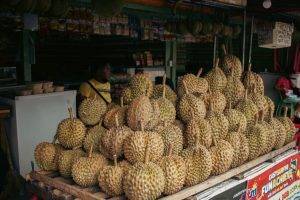A ramen restaurant in Taipei, ‘The Ramen Boy,’ has sparked intrigue and appetite by introducing a unique dish. They’ve incorporated a 14-legged creature known as the giant isopod into a bowl of noodles.
The restaurant launched this limited-edition offering last week, and more than 100 people have since joined a waiting list, eager to experience this culinary novelty.
The giant isopod’s unusual appearance makes it captivating, says Mr. Hu, the 37-year-old owner. It’s steamed for 10 minutes before being placed atop a bowl of ramen with a robust chicken and fish broth. Patrons liken the meat’s taste to a combination of crab and lobster, marked by a dense texture and some chewiness.
Origins of the Giant Isopod
According to the NOAA Ocean Exploration, giant isopods, distant relatives of crabs and prawns, are the largest species within the crustacean group. These fascinating creatures usually dwell deep in the ocean, typically found between 170 to 2,140 metres, with a majority at depths between 365 to 730 metres. A specific variety, Bathynomus jamesi, discovered near the Dongsha Islands in the South China Sea, is believed to be the species served in the restaurant, typically caught between 300-500 metres in depth.
Medical Perspective and Concerns
The dish, although stirring excitement among food enthusiasts, has also ignited medical apprehensions. Concerns regarding potential environmental impacts and health risks associated with bottom trawling fishing tactics have emerged since the ramen’s launch.
Some critics, such as Huang Ming-chih, a biotechnology associate professor specialising in deep-sea invertebrates at the National University of Tainan, have cautioned against possible health risks. Given the largely unknown nature of the species, it might contain toxins or heavy metals, such as mercury. The Bathynomus jamesi species, only officially recognised in Taiwan last year, lacks comprehensive data.
Ming-chih recommends conducting more research to compile a comprehensive database on the species, affirming safety prior to its consumption.
Deep Dive into Medical Concerns
The medical implications surrounding the consumption of deep-sea creatures like the giant isopod warrant further exploration. Although data on Bathynomus jamesi is sparse, we can glean insights from similar pelagic species.
- Potential Toxicity: Given their long lifespans and the depth at which they dwell, many deep-sea creatures actively bioaccumulate toxins from their environment. For instance, certain deep-sea fish species accumulate mercury in their bodies, leading to health concerns when consumed regularly. Mercury is a neurotoxin that, in high amounts, can harm the nervous system and potentially cause cognitive and motor impairment.
- Heavy Metal Contamination: Just as with toxins, heavy metals like lead, cadmium, and arsenic can be bioaccumulated in the bodies of deep-sea organisms. For instance, studies have shown that some crustaceans, such as lobsters and crabs, tend to accumulate these metals in their tissues. Prolonged exposure to heavy metals in humans can lead to a range of health issues. These include kidney damage, bone diseases, and various cancers.
- Unknown Allergens: Allergens are another concern when consuming less-studied species. Shellfish allergy is one of the more common food allergies, particularly in adults, and reactions can be severe. Symptoms range from mild reactions like hives and nasal congestion to more severe symptoms such as anaphylaxis, a potentially life-threatening reaction that can constrict airways and cause shock. Given that the giant isopod is a distant relative of crabs and prawns, it could potentially trigger similar allergic reactions in individuals with shellfish allergies.
- Nutritional Profile: Despite potential risks, deep-sea species may also offer nutritional benefits, like being rich sources of proteins, omega-3 fatty acids, vitamins, and minerals. However, without comprehensive data on the giant isopod, it’s hard to make conclusive statements about its nutritional content and potential health benefits.
The Customers’ Viewpoint
Yet, customers at the restaurant counter these concerns. One patron, 34-year-old genetic counsellor Digell Huang, advocates trying the dish if presented with the opportunity. He is fine with it given the isopods’ accidental capture, as stated by the restaurant owner.
In essence, the recent addition of the giant isopod to Taiwanese cuisine encapsulates the adventurous spirit of food culture. While it brings new dimensions of taste and intrigue, it also underlines the importance of thorough research and understanding. This is especially important when dealing with lesser-known species from the deep sea. It’s a reminder that gastronomic innovation should proceed with ecological consciousness and health considerations.














